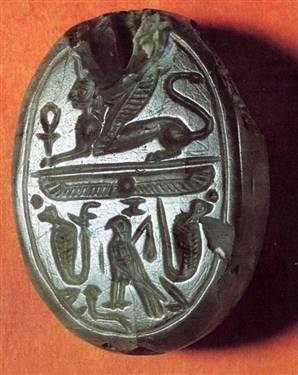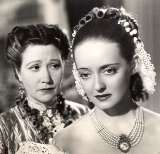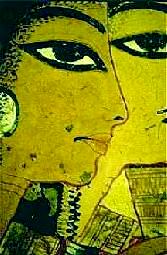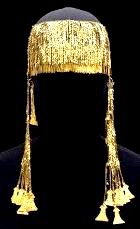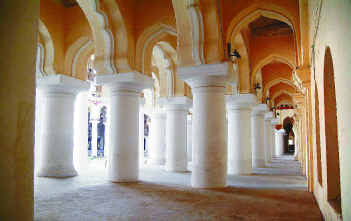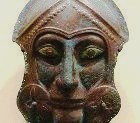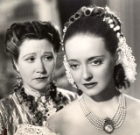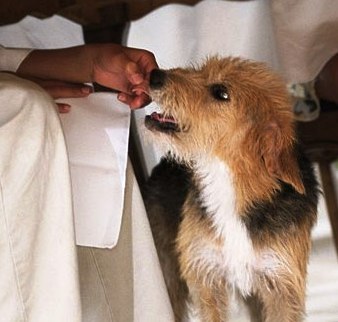JEZEBEL, Queen of Israel
Cosmetics in the ancient world
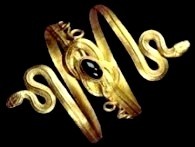
What was a ‘Jezebel’?
The trademark of a ‘Jezebel’ was a painted face, and certainly the fashion-conscious Israelite women used cosmetics and beauty aids – as Jezebel did.
What did the Bible think of cosmetics?
The prophet Isaiah did not approve of women who wore make-up. He called them haughty and wanton, and describes the way they walked with their head erect (Isaiah 3:16-24).

Submission was more becoming in a woman, he thought.
It irritated him that
- they wore foot and ankle jewellery
- did their hair in elaborate styles and
- wore fabrics so thin that their curves showed through.
What cosmetics were used in Bible times?
Despite Isaiah’s disapproval, women at every level of society wore what they could afford. There were almost as many items of make-up as there are today.
- There were perfumed oils for the face and body, ointments and pumice stones to soften and smooth the skin. A beautiful stone and ivory cosmetics jar excavated from Tutankhamun’s tomb still held skin cream made from nine parts animal fats and one part perfumed resin.
- There were bronze and silver tweezers and razors. In Egypt, body hair was considered undesirable, possibly vulgar, so shaving the body or plucking body hair with tweezers (yes, all over!) was done on a regular basis, at least by women at the royal court.
- There was kohl, a black paste carefully drawn along the edges of the eye, used to darken eyebrows and lashes.
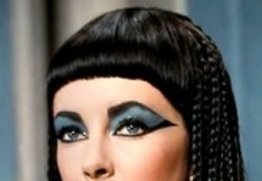
Elaborate eye make-up and wig worn in the movie ‘Cleopatra’
- There were many different types of eye-shadow, including the blue-green and pink-brown shades used today. One difference was that eye-shadow might be applied to the lower lid as well as the upper one. Cleopatra is said to have used black for eyelashes and brows, dark blue on her upper lids, and a grey-green underneath her eyes.
- There was a fine face powder made of white lead – this type of powder was used until quite recently, certainly in the 20th century.
- Women rouged their cheeks and lips, and stained the palms of the hands and the soles of their feet with henna.
- Vermilion was used on fingernails and toenails, and nipples were rouged to show through the delicate fabric of a bodice.
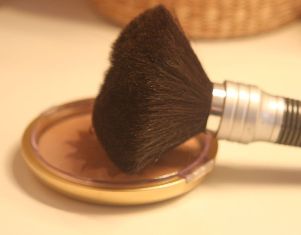
Many of the same cosmetic techniques we use today were also used in ancient times: a modern blusher
- As a final touch, they combed their hair with ivory combs, and sprinkled gold dust through it, or used magnificent wigs with elaborate braids and ringlets.
- Over this a royal woman like Jezebel could wear a gold crown inlaid with precious stones.
- Incidentally, there were hair dyes, so a woman (or a man) need never go grey.
All this lavish preparation was magnified a dozen times whenever Jezebel dressed as the high priestess of Baal. On these occasions she was standing in, as it were, for a goddess, so she had to be as perfect, as beautiful, as alluring as she could be.
Goddesses and a god in ancient Israel
1. Asherah, the Earth Goddess
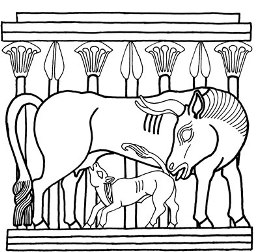
Drawing of ancient image of the goddess Ishtar suckling her calf
The most important of the natural forces, especially for women, was Asherah – the Earth, from which all life sprang. She was the Great Mother of plants, animals and humans.
She had the gift of life within her, because she could produce new life from her own body. When people thought of an image that summed up her qualities, they saw her in animal form as a cow suckling her calf from great fat udders full of milk.
Ancient people venerated the earth as if it were their own mother. They saw in the curves and crevices of the earth something that reminded them of the body of a woman.
2. Anat, the Spirit of Woman
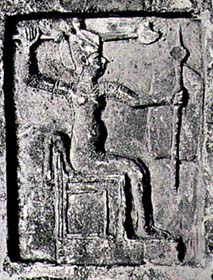
Ancient Ugaritic icon of Anat; note the womanly figure but also the weapons of war
Asherah’s daughter was Anat, the spirit of ‘woman’.
- She was young girl, married woman, and matriarch.
- In charge of the household and family, she protected and controlled everything to do with it.
- She produced a family, then guarded its welfare fiercely.
- As brave as a lioness in the face of danger, she was ready to fight and kill in defence of her family.
This ancient ideal of womanhood was never yielding or submissive, but strong and sure.
She was loyal to the men of her family if they needed her, and in fact the relationship between Anat and her brother Baal is one of the most enduring in ancient mythology.
But it is very much a relationship of co-operating equals. Anat could bully and manipulate the men in her family if she judged it to be in their best interest. She was all softness when she loved, “as the heart of an antelope yearns for its fawn, so is the heart of Anat”, but she took her revenge on anyone who hurt her family.
This was the model of womanhood that Jezebel learnt about as a child, and practiced as a woman. It lay behind her actions when she confronted Naboth, and took land from him to give it to her husband.
In her eyes, she was defending Ahab from a dangerous outsider.
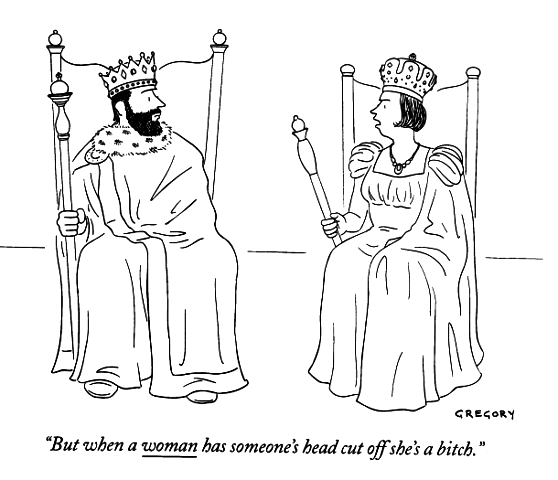
3. Baal, the Divine Semen
But Jezebel’s main allegiance was to Anat’s brother, Baal. He embodied all the virility and force of the male spirit. His presence was in water, a symbol of divine semen which fell on the earth, penetrated it, and stimulated it to produce life.
Baal was embodied in the streams and rivers which watered the land and brought it to life.
- His swaggering male bombast was in the thunder
- his male power in the lightning
- he was fresh water and sea water, and without him there was no life
- when he withheld himself from the earth it grew sterile like a widow withering from lack of love.
Search Box
![]()
Who ruled Israel? Omri – King of Israel
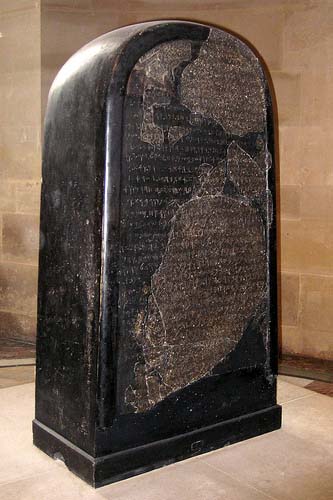
The Meshe Stele mentions Omri, king of Israel, who dominated the neighboring territory of Moab
Jezebel’s father-in-law was Omri, one of the most famous kings of the ancient world.
He was a force to reckon with. He had been born a commoner, but rose through sheer ability to the position of military commander.
When the lawful king of Israel (a drunken incompetent) was murdered by a man named Zimri, a power struggle erupted among the commanders. Omri was the soldiers’ choice.
Later events showed it was a sound one. His reign lasted only twelve years, but his impact was enormous.
He seems to have been one of those people born without fear, reckless enough to think that they can do anything they want. These people have ego and daring — but they can be dangerous to the people around them. They have no sense of their own limitations, so when they want something, they simply go for it.
What Omri had seen, wanted, and taken was the throne of Israel.
He now governed so brilliantly that long after his death, long after the deaths of all his descendants, foreigners still called Israel ‘the land of Omri’.
The Divided Kingdoms, Israel and Judah
Israel always had an uneasy relationship with its kings.
When Solomon died in 926BCE, Israel was over-extended both economically and politically. Moreover, the people were not reconciled to the idea of a monarch, nor to the higher taxes they had to pay to support a king.
Worse still, monarchy clashed with the ideal of Yahweh as sole ruler of Israel, and the northern tribes in particular felt they were being excluded from power.
When Solomon was succeeded by his son Rehoboam, the ten northern tribes refused to accept him as their king.
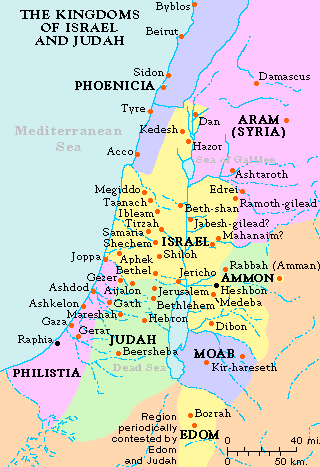
Map of the two kingdoms of Israel and Judah
So the united kingdom of Solomon split into two: Israel in the north, Judah in the south.
The ten tribes of Israel elected Jeroboam, an army officer who had led a revolt against Solomon, as their king. His slogan was ‘Back to your tents, O Israel’, and his popularity showed that many Israelites longed for a return to the tribal structures of the pre-monarchy period.
David’s kingdom splits apart
Divided as they were, the two separate kingdoms could not hold on to the extra territories that David originally won, and most of the land he had conquered was lost. Over a period of several hundred years, there were continual struggles for the throne, and the Book of Kings records intermittent fighting between Israel and Judah.
In fact, the independence of Israel during the glory days of David and Solomon had only been possible because of the power vacuum that existed in the Middle East at that time.
Now, while the two kingdoms fought among themselves, the power of an empire to the north-east was growing. The Assyrians from northern Mesopotamia began to emerge as a force to be reckoned with.
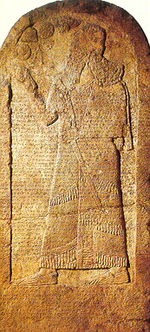
Stele of Shalmaneser, which records the great battle of Qarqar where Ahab and his allies defeated the Assyrians
At first, the Assyrians made only sporadic incursions into Israelite territory.
But as they consolidated their power, the struggle intensified. Neither Judah nor Israel gave up without a fight. Many of their kings were engaged, either singly or with other nations, in holding the Assyrian forces at bay.
Ahab, husband of Jezebel
The most notable of these kings was Ahab, husband of Jezebel. In 853BCE he combined forces with the Egyptians and the Syrians to defeat the Assyrians at the great battle of Qarqar.
But Ahab was followed by weaker kings, and eventually the northern kingdom of Israel was overcome. In 721BC the Assyrians conquered Israel, making it one of their provinces. The people of the northern kingdom, captured by the Assyrians and deported to Mesopotamia, disappeared from history. They were the ‘ten lost tribes if Israel’.
In the south, Judah had a variety of kings and leaders. Eventually, in 586BC, the Babylonians under Nebuchadnezzar overcame Jerusalem, pulled down its walls and destroyed the Temple. Nebuchadnezzar removed all members of the educated and affluent classes to Babylon, so that the people were without leaders. This made rebellion less likely.
Women’s Lives in this era
The period of the divided kingdoms was marked by political upheavels – what’s new? For women of the nobility or the elite classes, like Jezebel, and for women attached to the army, it was an uncertain and dangerous period.
For the average peasant farming family working in the countryside, life probably remained much the same. Crops still had to be planted and harvested, children born and raised, and taxes paid.
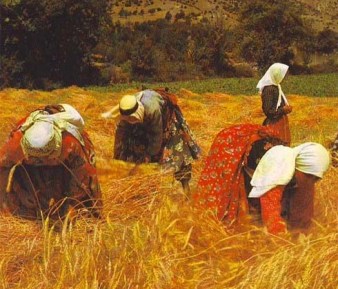
A good harvest meant security, prosperity; a bad one brought hardship, even danger
During this time, worship of the ancient gods of the weather and the harvest continued, side by side with worship of Yahweh.
In the northern kingdom of Israel, there were large groups of Canaanites who continued to worship their traditional deities. There was some pressure on the Israelites to conform to exclusive worship of Yahweh, but they resisted it because
- they had intermarried with the Canaanites, and accepted Canaanite religion
- they found the fertility deities relevant to the agricultural communities in which they lived.
From the number of references in the Bible to Asherah and Baal, it seems that veneration of these deities was widespread and popular.
How do we know the gods & goddesses?
We know the stories of these gods from a library of clay tablets dug up in the northern city of Ugarit. The tablets tell us what the deities were like, and what their stories were. There were four main gods:
- Anat was a builder, and a fierce defender of her family
- Asherah personified the fertility of all females, whether human or animal
- Baal controlled all water on the earth, in rain and in rivers, and
- El was the source of stability, law and authority.
Women in particular seem to have held on tenaciously to the ancient religious practices. Written at the end of this period, Ezekiel 8:14 gives us a glimpse of women involved in worship of the god Tammuz.
He was the essence of fertility in vegetation, the invisible force that made everything grow. Each year in his life cycle
- he was born (in spring)
- lived a strong and healthy young life (in the flowering of summer)
- had a full and fruitful maturity (in the harvests of autumn)
- and then died (as vegetation disappeared in winter).
In a ritual that showed the overwhelming importance of this cycle in their lives, women wept together at the beginning of winter as if they were mourning the death of a real person – to them, Tammuz was real.
Later prophets, trying to discern the cause of the destruction of Jerusalem by Nebuchadnezzar, criticized this form of worship. They divided the kings of this period into good and bad according to their religious allegiance, either to Yahweh (good) or Baal/Asherah (bad).
More on Bible women
For additional information on the lives of women in the Bible, see
Family, work and religion: the tribe, the family, slaves, women’s tasks, beliefs
Milestones in a woman’s life: Puberty, menstruation, marriage, childbirth, death, burials
Clothes, jewels, cosmetics in Bible times : women’s clothes, ancient fabric, weaving, different styles for rich and poor, cosmetics
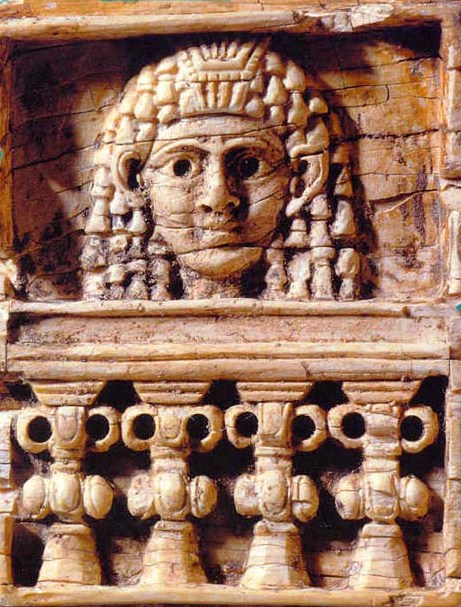
Jezebel: the ivory named ‘Woman at the Window’ , said to represent a priestess of the fertility gods and/or an ancient Eastern queen
Search Box
![]()
Jezebel – Bible Woman – Women of the Old Testament; Bible Study Resource
Jezebel, queen of Israel and priestess of Baal; her husband Ahab and the prophet Elijah
Jezebel links
Bible Murders
Jehu murders Jezebel and the royal children
Movies
Movies about
powerful women at
Bible study activities.
© Copyright 2006
Elizabeth Fletcher

